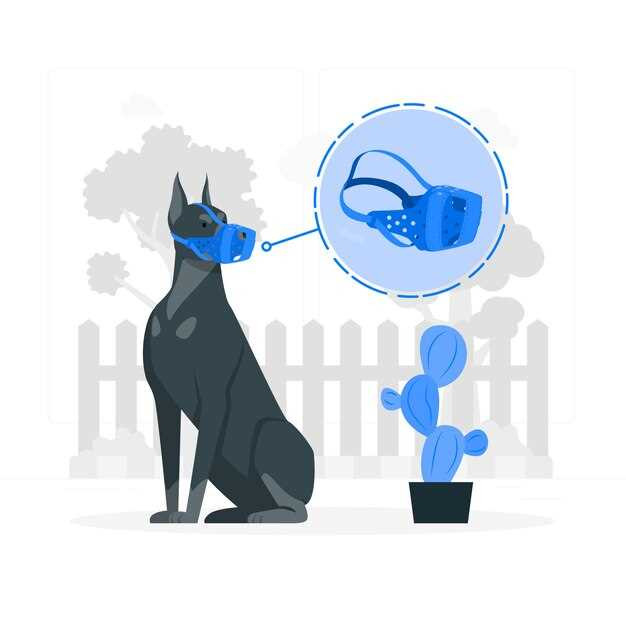
If you and your furry friend love spending time on the beach, you may have encountered the pesky problem of sand fleas. These tiny insects can cause severe discomfort for your dog, resulting in itching, scratching, and even skin infections. In order to keep your dog happy and healthy, it’s important to know how to get rid of sand fleas.
Prevention is key: The best way to deal with sand fleas is to prevent them from attacking your dog in the first place. Before heading to the beach, apply a flea repellent specifically designed for dogs. Look for products that contain ingredients such as fipronil or permethrin, as these are known to effectively repel fleas.
Frequent grooming: Regular grooming sessions can help you spot and remove sand fleas from your dog’s fur. Use a fine-toothed flea comb to carefully comb through your dog’s coat, paying special attention to the neck, belly, and tail areas. If you spot any fleas, dip the comb in a bowl of soapy water to kill them.
Remember to thoroughly clean your home: When dealing with sand fleas, it’s important to not only focus on your dog but also on your home. Vacuum your carpets and furniture regularly, and wash your dog’s bedding in hot water to kill any fleas or eggs that may be hiding there. You may also consider using a flea spray or powder to treat your home and yard.
What Are Sand Fleas?

Sand fleas, also known as sand flies or beach fleas, are tiny parasitic insects that are often found in sandy coastal areas. Despite their name, sand fleas are not actual fleas and are not related to fleas at all. They belong to a different family of insects, known as crustaceans.
Sand fleas are typically very small, measuring about 1 to 3 millimeters in length. They have a thin, elongated body with long legs that allow them to move quickly in sandy environments. Despite their small size, sand fleas can cause significant discomfort and irritation for both humans and animals.
These tiny creatures are commonly found on beaches, as they thrive in warm and sandy habitats. They are most active during dusk and dawn and are attracted to the warmth and carbon dioxide emitted by mammals, including dogs.
Unlike regular fleas, which infest and live on animals, sand fleas do not reside on their hosts. Instead, they bite and feed on their hosts’ blood before returning to their sandy habitats. Sand flea bites can be very itchy and cause redness, swelling, and irritation on the skin of the affected area.
| Key Features of Sand Fleas |
| 1. Small size – Approximately 1 to 3 millimeters in length. |
| 2. Thin, elongated body with long legs. |
| 3. Active during dusk and dawn. |
| 4. Attracted to warmth and carbon dioxide emitted by mammals. |
| 5. Bite and feed on their hosts’ blood. |
It is important to take preventive measures to protect dogs from sand flea bites, especially when visiting sandy coastal areas. Regular grooming, use of flea repellents, and avoiding areas where sand fleas are prevalent can help keep dogs safe from these pesky insects.
Signs of Sand Flea Infestation
If your dog spends time in sandy areas, it’s important to keep an eye out for signs of sand flea infestation. Sand fleas, also known as beach fleas or mole fleas, are tiny crustaceans that live in sandy environments and can cause discomfort and skin irritation in dogs.
One of the most common signs of sand flea infestation is excessive scratching and biting. If you notice your dog scratching or biting at their fur more than usual, it could be a sign that they have been bitten by sand fleas. The bites can be itchy and uncomfortable, leading to constant scratching and chewing.
Another sign to look out for is red, inflamed skin. Sand flea bites can cause irritation and redness, which can be especially noticeable on dogs with light-colored fur. The affected areas may also be swollen and hot to the touch.
In severe cases, sand flea infestations can lead to hair loss and the formation of scabs or sores. If you notice patches of missing fur or any unusual skin abnormalities, it’s important to get your dog checked by a veterinarian. These symptoms could indicate a more serious infestation or an underlying skin condition.
It’s also worth noting that sand fleas are most active during warmer months, so it’s especially important to be vigilant during that time. Taking preventative measures, such as regularly grooming and inspecting your dog’s fur, can help reduce the risk of infestation.
If you suspect your dog may have a sand flea infestation, it’s important to seek veterinary treatment as soon as possible. Your vet can recommend appropriate flea treatments and help alleviate your dog’s discomfort. With proper care and treatment, you can help your furry friend get rid of those pesky sand fleas and keep them happy and healthy.
Preventing Sand Flea Infestation
If you want to keep your dog safe from sand fleas, taking preventive measures is crucial. Here are some effective ways to prevent sand flea infestation:
1. Regular grooming: Keep your dog’s coat clean and well-groomed to make it less attractive to sand fleas. Regularly brush and bathe your dog with a flea shampoo to reduce the risk of infestation.
2. Avoid infested areas: Stay away from areas with a high population of sand fleas, such as sandy beaches and dunes. If you live in an area where sand fleas are common, consider walking your dog in different locations.
3. Use preventive products: Consult with your veterinarian and use flea prevention products recommended for your dog’s breed and size. These products can come in the form of topical treatments, collars, or oral medications to repel and kill fleas.
4. Keep your yard clean: Regularly clean up your yard and remove any debris, leaves, or standing water where sand fleas can hide. Regularly mow the lawn and trim bushes to reduce the flea population.
5. Check your dog’s bedding: Wash your dog’s bedding regularly with hot water to kill any fleas or eggs that might be hiding. Vacuum your dog’s sleeping area and surrounding areas often to remove any fleas or eggs that may have fallen off.
6. Consult with a professional: If you live in an area with a high sand flea population, consider contacting a professional pest control service for advice on effective treatments and prevention methods.
By following these preventive measures, you can significantly reduce the risk of your dog getting infested with sand fleas. It is important to be vigilant and take action to protect your furry friend from these annoying pests.
Treating Sand Flea Bites on Dogs
If your dog has been bitten by sand fleas, it’s important to take action to relieve their discomfort and prevent any further complications. Here are some steps you can take to treat sand flea bites on your dog:
1. Assess the situation: Start by examining your dog’s skin to identify the sand flea bites. Look for small, red bumps or clusters of bites. These may be accompanied by itching, swelling, or redness.
2. Clean the affected area: Use a mild antiseptic or a pet-safe cleanser to gently clean the bites. This will help prevent any infection and soothe your dog’s skin.
3. Apply a cold compress: To alleviate itching and reduce inflammation, apply a cold compress to the affected area. Wrap a few ice cubes in a washcloth and gently press it against the bites for a few minutes at a time. This can provide temporary relief for your dog.
4. Use over-the-counter remedies: There are various over-the-counter creams and sprays available that can help alleviate itching and reduce inflammation. Be sure to choose products specifically formulated for dogs and follow the instructions carefully.
5. Consult your veterinarian: If your dog’s sand flea bites are severe or if you notice any signs of infection, it’s important to seek veterinary advice. Your vet may prescribe oral medications or recommend additional treatments to ensure your dog’s speedy recovery.
6. Prevent future infestations: To protect your dog from future sand flea bites, it’s important to take preventive measures. Keep your dog’s bedding clean, vacuum your home regularly, and use appropriate flea preventives as recommended by your veterinarian.
Remember, treating sand flea bites on dogs requires patience and consistency. With proper care, your dog will be on the road to recovery in no time.
Home Remedies for Sand Fleas on Dogs
If your dog is suffering from sand flea bites, there are several home remedies that you can try to help alleviate their discomfort and get rid of the pests. These remedies are safe and effective, and can be easily done at home.
| Remedy | Description |
|---|---|
| Apple cider vinegar bath | Mix equal parts of apple cider vinegar and water in a bathtub or large basin. Soak your dog in this solution for about 10 minutes, then rinse thoroughly. Apple cider vinegar helps to soothe itching and kill fleas. |
| Lemon juice spray | Mix the juice of two lemons with a quart of water and pour the mixture into a spray bottle. Spray your dog’s fur, focusing on the affected areas. Lemon juice acts as a natural repellent for fleas. |
| Baking soda paste | Combine baking soda with enough water to make a paste. Apply the paste to the bitten areas and leave it on for about 10 minutes before rinsing off. Baking soda helps to reduce itching and inflammation. |
| Neem oil | Mix neem oil with a carrier oil, such as coconut oil, in a 1:10 ratio. Apply a few drops of this mixture to your dog’s fur, paying attention to the affected areas. Neem oil has natural insecticidal properties and helps to repel fleas. |
| Oatmeal bath | Grind a cup of oatmeal into a fine powder and mix it with warm water. Bathe your dog in this oatmeal bath, making sure to saturate their fur. Oatmeal soothes itching and irritation caused by flea bites. |
Remember, while these home remedies can provide relief for your dog, it’s important to also take steps to prevent future infestations. Regularly grooming your dog, keeping their bedding clean, and vacuuming your home can help to eliminate sand fleas and keep your dog free from infestation.
When to See a Veterinarian
If your dog is experiencing severe itching, discomfort, or pain due to a sand flea infestation, it is important to seek veterinary care. A veterinarian will be able to accurately diagnose and treat the issue, providing relief for your dog.
In some cases, a simple sand flea infestation can lead to more serious health problems, such as allergies, infections, or secondary skin issues. If you notice any of the following symptoms, it is crucial to consult with a veterinarian:
| – Persistent scratching or biting at the affected area | – Hair loss or redness on the skin |
| – Open sores or lesions | – Swelling or inflammation |
| – Excessive licking or chewing of paws or other body parts | – Foul odor coming from the affected area |
A veterinarian will be able to prescribe medications, such as oral or topical flea treatments, to effectively eliminate the sand fleas on your dog. They will also provide guidance on preventing future infestations and offer additional advice on keeping your dog comfortable and parasite-free.
If you are unsure whether your dog is suffering from sand flea infestation or if their symptoms persist or worsen despite at-home treatment, it is best to consult with a veterinarian for proper diagnosis and treatment.